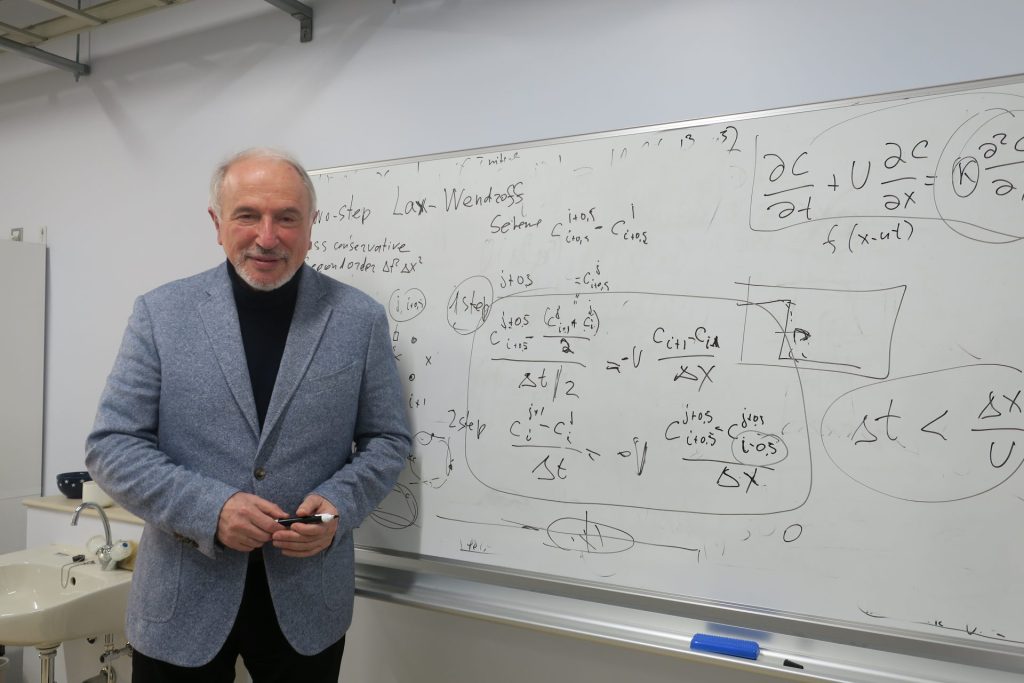Environmental radioactivity is a scientific field with important consequences for many people.
Mark Zheleznyak (Project Reseacher)
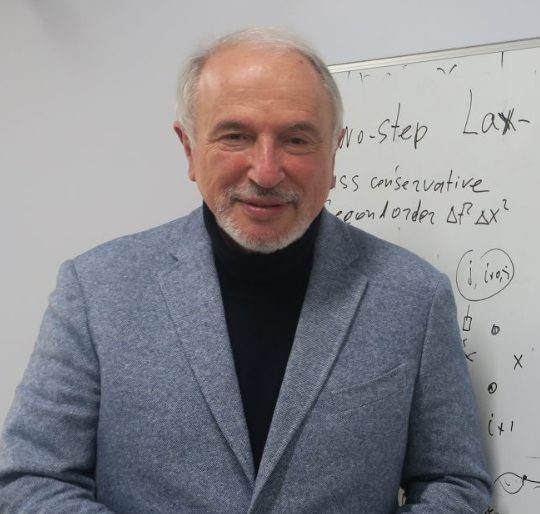
What made you interested in your research field, modeling of radionuclide transport?
I graduated from the Odessa Environmental University, Ukraine with a diploma in Engineering Hydrology with distinctions in 1973. Because my favourite subjects were mathematics and physics, I specialized in Computational Hydrology and Computational Hydraulics. My first three articles in these areas were published in Soviet scientific journals when I was still an undergraduate student. After graduating from the university and serving as a private in Soviet Air Force 1973-1974, I began working at the Institute of Hydromechanics of the Academy of Sciences of Ukraine (ASU) that was conducting modeling research. As Hydromechanics is a more mathematical field than Hydrology, the research activities of the institute matched my interest. At the institute, I completed my postgraduate studies and defended my Ph.D. dissertation on Computational Fluid Mechanics in 1983. Although I could not imagine that I would engage in the modeling of radionuclides in water systems before the Chernobyl accident, my background that covers both Hydrology and Hydromechanics led me to that direction after 1986.
What kind of researches did you conduct before you came to IER?
Before the Chernobyl accident, I developed numerical models of waves, turbulent currents, and suspended sediment transport in rivers and coastal zone of the seas. One of the areas the developed models could be applied was modeling tsunami waves and their impact on coastal structures. The modeling of the currents and suspended sediment transport in Ukrainian rivers and the Black Sea coastal zone was also another area I applied my activities.
I began activities on modeling radionuclide transport in Ukrainian rivers on May 5, 1986, nine days after the accident. Academy of Science has established a Task Force Unit whose objectives were to develop a model based on the computerized Decision Support System (DSS) for the prediction of 137Cs and 90Sr transport in Pripyat River and Dnieper River and to justify the measures to reduce the water contamination. Developing the model was considered critical because Chernobyl Nuclear Power Plant (ChNPP) was located 110 km upstream of Kiev and on the banks of Pripyat River, a tributary of Dnieper River. Nobody could predict the risk of radioactive contamination at that moment. This river system would be a pathway of radioactive waters from the heavily contaminated area around ChNPP to Kiev. It also would be the pathway to the Black Sea through 800 kilometers of rivers and reservoirs. Moreover, it was considered that fluxes of radionuclides through river water could be increased during the spring season due to heavy floods caused by snowmelt and heavy rainstorms. The Task Force Unit used programmers, computer equipment and premises of Cybernetics Center, ASU. I was invited there as an expert in Computational Hydrology and Hydraulics. Then, as a leader of the Task Force Unit, I conducted data collection not only in Kiev but also directly in Chernobyl Exclusion Zone (ChEZ).
The first our forecasts were presented to the Ukrainian government in September 1986. In March 1987, a new Department of Environmental Modeling was established in the Institute of Mathematical Machines and Systems of Cybernetics Center, ASU, and the core experts of the Task Force Unit were invited to be its staff members. I was appointed as Head of this Department. We regularly forecasted the radioactive contamination in Dnieper River during spring flood seasons in 1987-1992 and presented the results to the government. Adding to that, we predicted the consequences of other emergencies in ChEZ and environmental impacts of construction projects in ChEZ including the New Safe Confinement based on the modeling results. Later, in 2004, I was awarded the Ukrainian State Prize in Science and Technology for these Chernobyl researches.
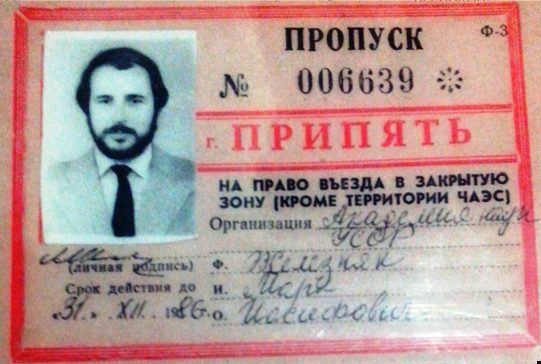
Until 1989, I had no opportunities for information exchange and collaboration with foreign scientists because information about Chernobyl contamination was strictly controlled by the Soviet Union. Nevertheless, the most comprehensive model I found through scientific publications in the course of developing our modeling system was the one by Dr. Yasuo Onishi. Dr. Onishi is a scientist of Japanese origin who made his Ph.D. dissertation in the U.S. and then worked on the development of radionuclide river-marine transport models in the Pacific Northwest National Laboratory (PNNL), the U.S. I used some approaches presented by him for the parametrization of radionuclide exchanges in the “water-bottom-suspended sediments” system. What a coincidence that the numerical modeling system developed by my Kiev team was influenced by a Japanese scientist many years before I began my work in Japan. Since ‘Perestroyka” in 1989, all restrictions on the information exchange and cooperation with foreign scientists were removed. I could meet Dr. Onishi in PNNL when I visited the U.S. for the first time on a Soviet-the U.S. program on nuclear reactor safety, which was the beginning of our long time scientific cooperation. We worked together not only at PNNL but also in Kiev, Chernobyl, and even in Fukushima.
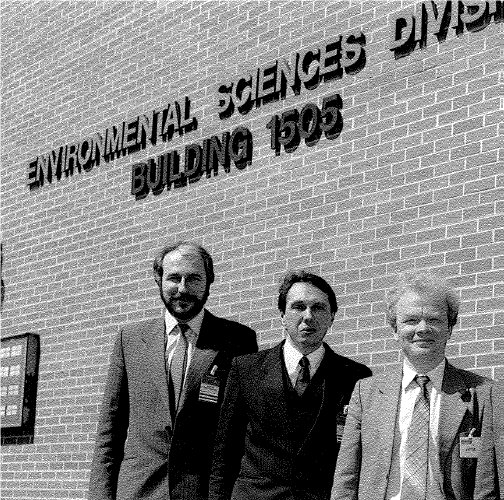
with Dr. Konplev and Dr. Voitsekhovich in 1989.
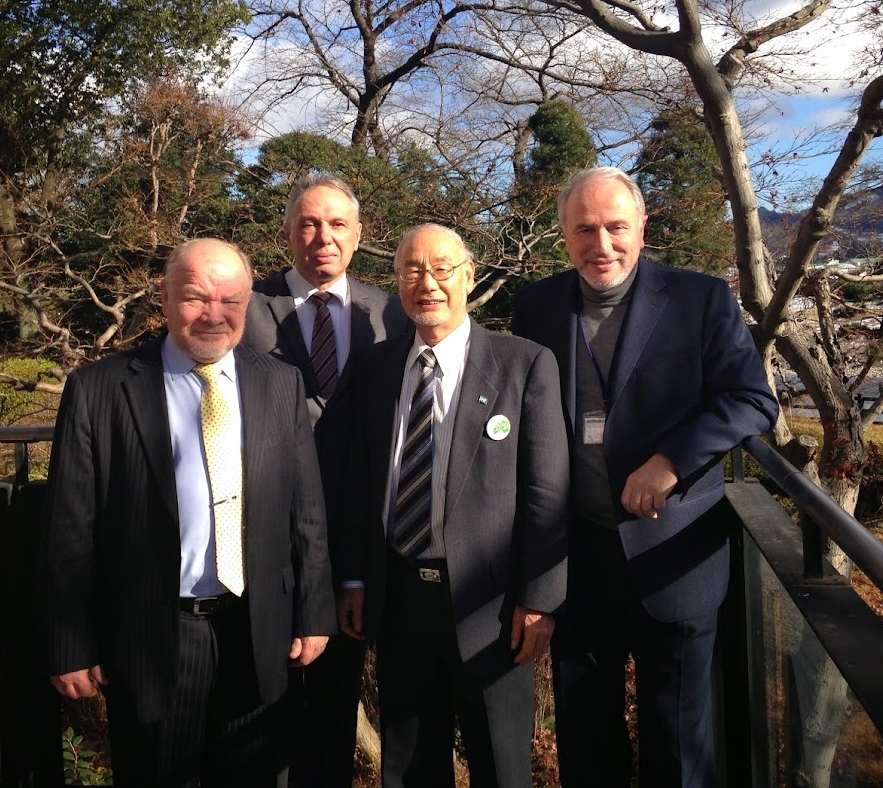
Since the 1990s, I participated in numerous international programs. One of the biggest programs was the EURATOM RTD program initiated by European Commission. That was an ambitious project aiming to develop the real-time online decision support system called RODOS for nuclear emergencies based on the “best” models developed and implemented after the Chernobyl accident. The project, coordinated by Karlsruhe Institute of Technologies, Germany, tried to integrate the models describing radionuclide transport in all environmental compartments, including atmospheric dispersion and deposition, hydrological transport, and radionuclide migration in the components of the agricultural food chain as well as modules to calculate exposure doses to the population based on predicted concentrations of radionuclides in air, water, soil, vegetation, and food products, under a friendly user interface. The modeling system had to be linked with the monitoring database consisting of data measured around nuclear power plants and a numerical weather prediction system. The system also needed to be equipped with tools that could be customized for any nuclear power plant and could be used to predict the radioactive contamination around the plant after an accident and to justify the most efficient countermeasures to reduce the radiation dose to the population. The set of the models developed by my Kiev team for rivers around Chernobyl and the marine environment was modified to be integrated into one of the modules of the RODOS system called the Hydrological Dispersion Module. From the early 1990s to 2013, further development of the RODOS system was a major part of my research activities.
Another important work in my research was participation in the Coordination Research Programs of the International Atomic Energy Agency (IAEA) on the validation and improvement of environmental radioactivity models based on the intercomparison of models and measurement. From 1990 to 2013, I was involved in several IAEA Programs including VAMP (elected as chairmen of River/Reservoir Group of this program), BIOMOVS, EMRAS, and MODARIA.
These experiences gave me a real sense of working in the international environment. Of course, there are sometimes hard discussions between scientists and managers who have different backgrounds and different goals, but I don’t afraid of it because it is necessary to achieve something useful in practical applications of R&D projects.
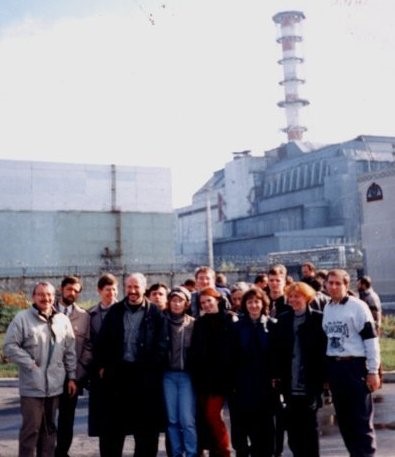
What brought you to IER?
Taking into account my experience in the modeling of radionuclide fate in river systems after the Chernobyl accident, I took it as my challenge to apply my knowledge to the Japanese water systems contaminated by the Fukushima Daiichi accident. Therefore, I was extremely motivated when I received an email in 2012 from Professor Yuichi Onda of Tsukuba University, the current partner of the IER as a collaborative research council, inviting me to Japan to introduce the results of my Chernobyl research. During the 10 days visit to Japan in autumn 2012, I gave lectures in Tokyo and Tsukuba, visited monitoring sites in Fukushima, and directly communicated with Prof. Onda and Prof. Kenji Nanba, whom I had met at a meeting of the RODOS project in Germany in 2011. After the trip, my interest in applying my modeling experience in Fukushima significantly grew.
Prior to the establishment of the IER in July 2013, I received a preliminary offer to apply to the Project Professor position of the IER in May 2013 and I accepted it. Being asked by the IER founding committee who else I would recommend as “Chernobyl scientists” from the former Soviet Union to invite to the IER, I recommended Dr. Sergii Kivva from my Kiev Department and Dr. Alexei Konoplev from Research Center Typhoon in Obninsk, with whom I had worked together in Chernobyl and many international projects since 1986. Also, as an expert organization in radioecology, I recommended the team of Ukrainian Institute of Agriculture Radioecology, from which Dr. Vasyl Youschenko and Dr. Olena Pareniuk joined the IER later. On 18 November 2013, Prof. Konoplev and I arrived together in Fukushima as Project Professors and the first researchers of the IER. In 2014, I applied for the position of Professor and was appointed for the position from 2015 to 2016. Then, due to the age limit for faculty members, I became Project Professor and have been working here to date.
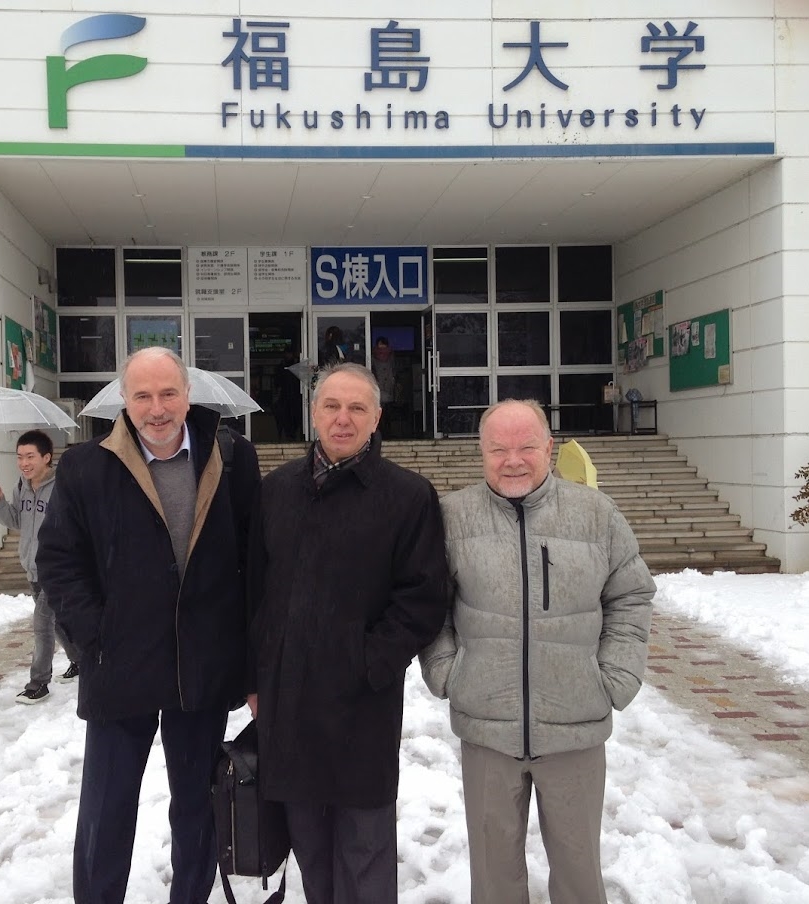
Could you please tell about your research at IER? What have you found so far?
The research area of my work in the IER is the mathematical modeling of 137Cs dynamics in rivers and reservoirs of Fukushima Prefecture and modeling of current 137Cs and 90Sr dynamics in Chernobyl Exclusion Zone within SATREPS project. These activities are in the streamline of the goals of the IER Modeling team: to better understand the key processes driving the dynamics of environmental radioactivity in Fukushima Prefecture and other areas impacted by the nuclear accident, and to improve modeling tools for predicting radionuclide dynamics using field and laboratory data measured and processed at the IER.
Specifically, our goals are
(1) to process data and new knowledge about the radioactivity dispersion in environmental media (air, rivers, lakes) in order to improve the prediction ability of the relevant models,
(2) to use models to predict radioactivity dispersion under extreme weather conditions from several days to weeks, as well as long-term transport of radionuclides on a scale of several decades,
and (3) to use models to verify whether implemented countermeasures will ensure containment of environmental contamination and reduce radiation dose to the general public in affected areas.
The transport of 137Cs by river flows in Fukushima Prefecture is characterized by a significantly higher amount of radioactivity transported by suspended sediments during floods compared to the transport in ChEZ and other European rivers. Therefore, I have worked on the development of more effective sub-models of particulate transport of radionuclides for a more accurate simulation of this natural phenomenon.
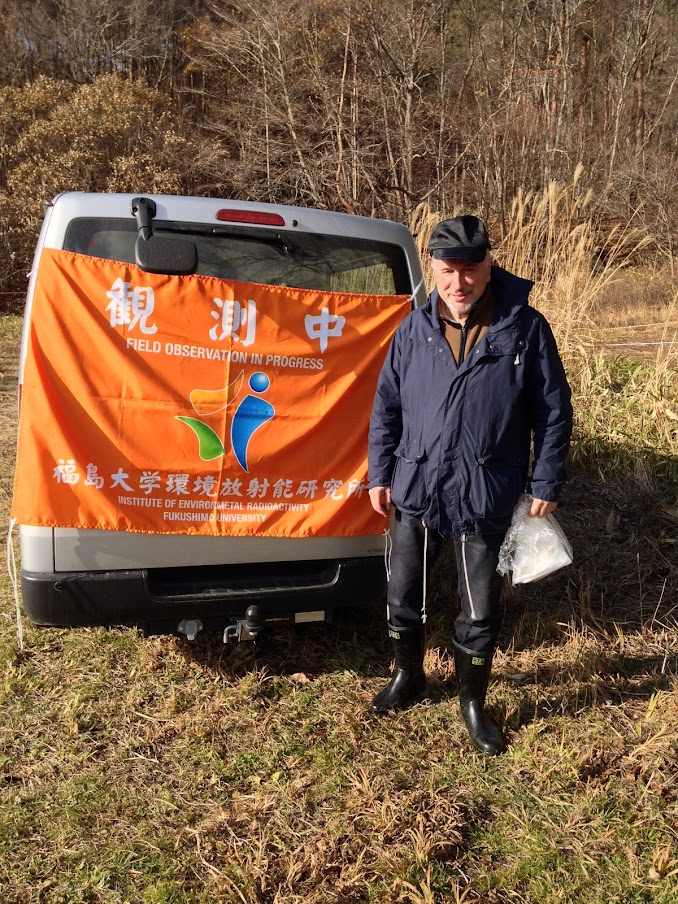
With Dr. Sergii Kivva, we developed a new distributed watershed model of radionuclide transport called DHSVM-R that was used in the hillslope scale to simulate 137Cs wash-off from the experimental plots. The data was measured and processed by Dr. Wakiyama and Prof. Onda, and by the simulation, it was demonstrated that this tool can be used to analyze the role of different watershed factors (e.g., slope steepness, soil types) on the total flux of 137Cs from the watershed and the flux distribution between soluble and particulate 137Cs. We implemented DHSWM-R in the Niida River system and quantified the influence of the decontamination activities in the western part of Niida River to the eastern lowland area near the basin. The result showed that the decontamination activity could not decrease the 137Cs concentration in lowland area within the range that can be identified by monitoring measurements taking natural hydrological variability of the river flow into account because the decontamination works were limited to the area not covered by forests and an only small part of the area was decontaminated.
The modeling study of 137Cs transport in reservoirs using DHSVM-R with a 2-D model, COSTOX-UN, confirmed that reservoirs in deep mountains played an important role as “traps” of contaminated sediment for coastal rivers. These reservoirs settle down major parts of inflowing contaminated sediments into the bottom depositions of the reservoirs and prevent the significant contamination of the lowland area.
We also achieved important results in improving the computational performance of the numerical models by developing a new robust numerical algorithm to calculate water fluxes in diverging river networks and a new algorithm to accelerate the parallel solution of the equations of two-dimensional models by the graphic processors of the computers. These provide the possibilities of stable calculation of river flow in mountains and high-performance computing that is required for fine 2-D models on simple personal computers.
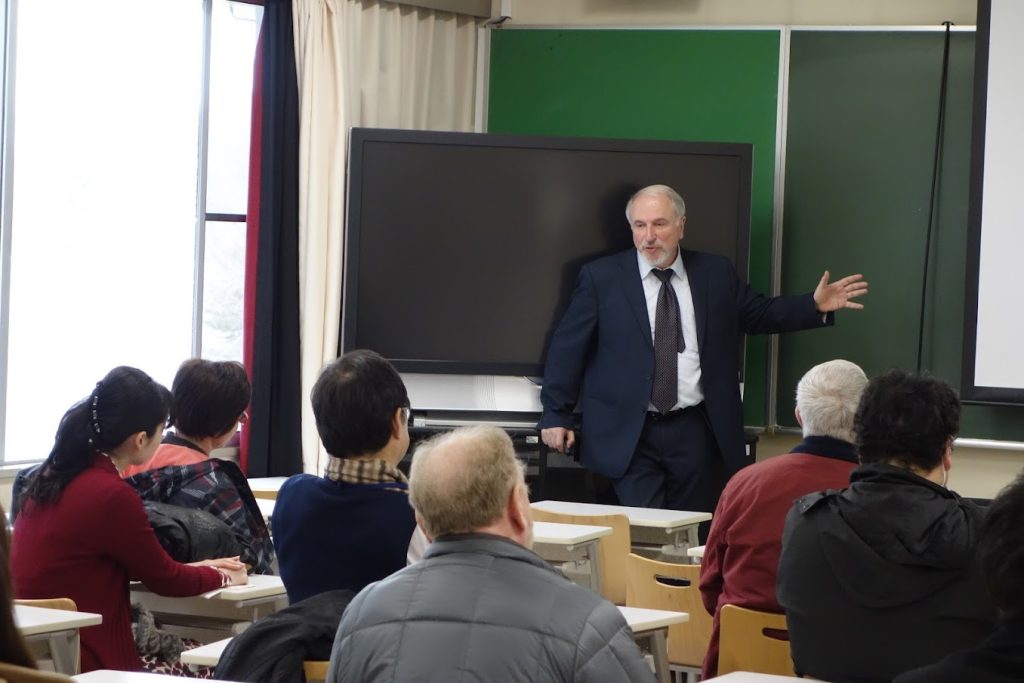
The next generation of modelers in the IER set tasks for further improvement of the radioactive hydrology models by introducing more detailed descriptions of the radionuclide exchanges in “water-sediment” systems of rivers in mountainous area. I recommend closer interactions between modelers and field and laboratory researchers of radioactivity in river systems.
Another important activity at the IER is education. Now, I am teaching in the class titled “Modeling in Environmental Radioactivity” in the master’s program of the Major in Environmental Radioactivity. It is a great pleasure that I can share my knowledge with students.
What made you try the SATREPS Chernobyl project?
SATREPS is a Japanese government program that promotes international joint research projects aiming to address global issues and lead to research outcomes of practical benefit to both local and global society. Studies of Chernobyl accident consequences in the Exclusion Zone were very active in the late 1980s and 1990s. However, the scale of such research in Ukraine declined drastically from the beginning of the 2000s even though there were still acute problems of radionuclide dynamics in the “hot spots” such as the Cooling Pond of ChNPP which had been drawdown since 2014. Also, there was a demand for scientifically backgrounded assessments of the dispersion of radionuclides from ChEZ to the surrounding populated areas and Kiev during emergencies in ChEZ such as forest fires and heavy floods. In order to provide such assessments, it was necessary to obtain newly measured data in ChEZ and experimental data on radionuclide behavior 30 years after the accident using contemporary monitoring and modeling equipment. In addition, it could be very useful for Ukraine to learn Japan’s management of the contaminated areas that have drastically diminished the size of the evacuation area while ChEZ borders have remained the same for more than 30 years.
For Japanese scientists, the direct involvement in the study of 137Cs behavior in ChEZ 30 years after the accident was very important. ChEZ is a kind of time machine because it allows us to study important features of radiocesium behavior that will be seen in Fukushima 20 years later.
Since both the Chernobyl accident and Fukushima Daiichi accident caused the largest environmental contamination of soil and water systems by radionuclides, it was a common understanding among the members of the IER and University of Tsukuba that cooperation between scientists from the countries could be mutually beneficial and provide new important scientific results.
Thus, my idea was supported by Japanese colleagues and we began the project in 2017 with 12 Ukrainian research institutes and the project’s beneficiary State Agency of Ukraine on Exclusion Zone Management. The project will be finished in March 2023. In the project, I am involved in modeling the current radionuclide dynamics in Pripyat River and the Cooling Pond as well as helping the Project’s Principal Investigator, Prof. Kenji Nanba, coordinate the research activities by the Ukrainian institutes, which I know well from the Chernobyl researches since 1986. I hope that this Fukushima-Chernobyl cooperation will continue in the next projects.
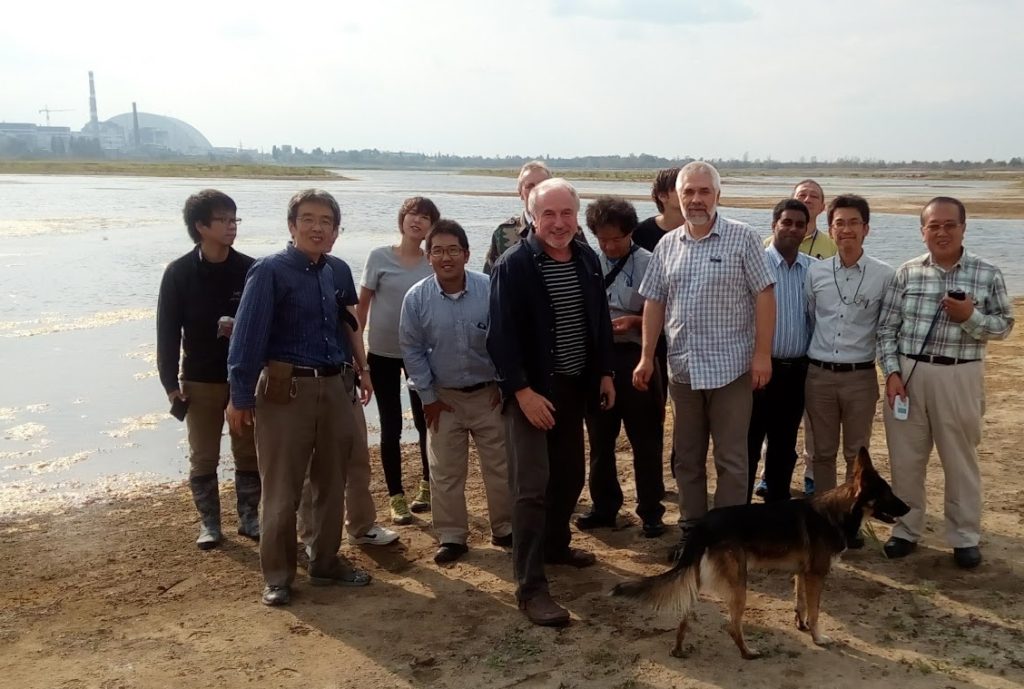
What do you want to tackle on in the next step of your life?
My contract with the IER will finish in March 2022. However, I hope that my experiences in Chernobyl and Fukushima are still useful to the IER. So, I am planning to continue to actively provide consulting on Fukushima-Chernobyl research cooperation.
What is your impression to Japan or Fukushima? Have you find any cultural differences between Japan and Ukraine?
About the cultural differences, my main findings are trivial ones. I do not find differences in core behaviors and feelings -work attitude, friendship, love, and a common understanding of what is good and what is bad. Of course, the ancient Japanese culture has generated, as I concluded, a kind of “secret room” within each Japanese person that is difficult for foreigners to understand. However, at the same time, with my “soviet” and Ukrainian cultural background, I don’t see any problem with communication and common understandings of all basic human issues. As humans, we are the same. This is what I learned as from my experience in international projects before coming to Japan as during the years of my Japanese life. I am really happy that the 8 years of my life in Japan brought me new wonderful friends. I have also received real support and help many times from unknown Japanese people in difficult situations during my trips.
I am a big fan of Fukushima Prefecture and Tohoku in a more general sense. I have traveled a lot by car and became a big fan of onsen. Tohoku is full of wonderful nature -mountains, forests, and ocean, historical heritage, meals, and wonderful people. I hope when the Covid-19 epidemic is over, to invite my friends from all over the world to Tohoku and share my wonderful impressions with them.
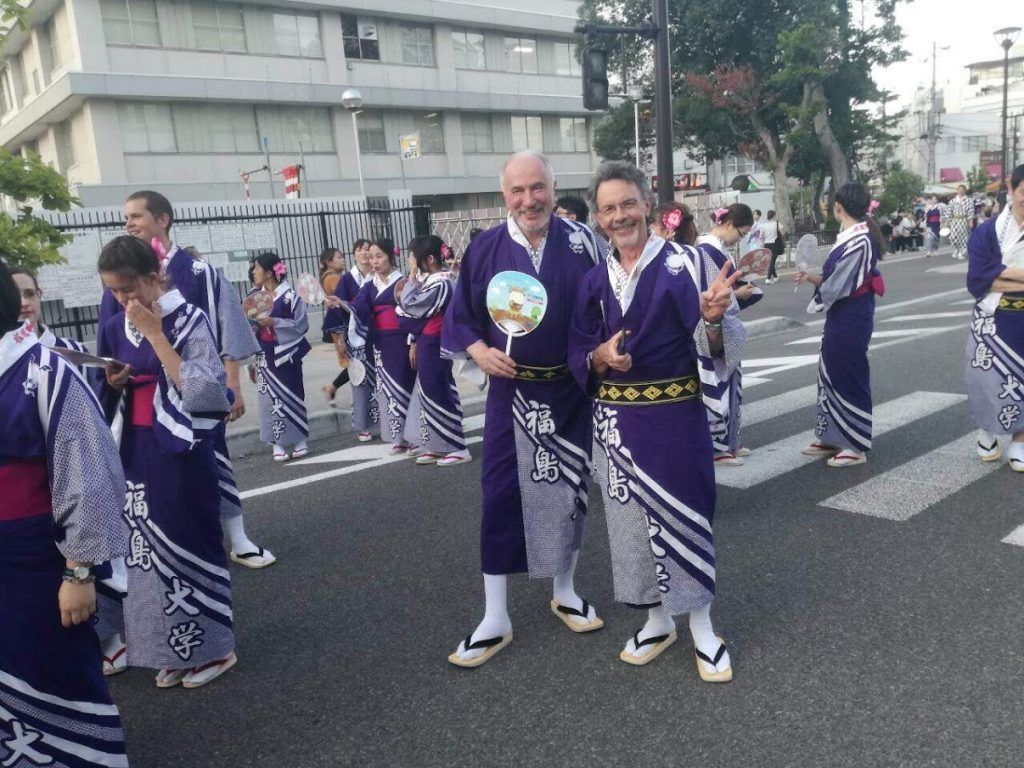
Could we have a message to people who are interested in studying Environmental Radioactivity?
Environmental Radioactivity is a complex field of science on the interaction of the environmental sciences, biology, physics, chemistry, mathematics, computer science. And it can produce important results for the environmental and health safety of many people. In my long life in this science, there were periods when I felt real happiness due to the achievements of important scientific results and that the results generated many important practical applications. I am sure that such kinds of feelings can be good motivation for young people to be a part of the family of the scientists providing research on environmental radioactivity.
